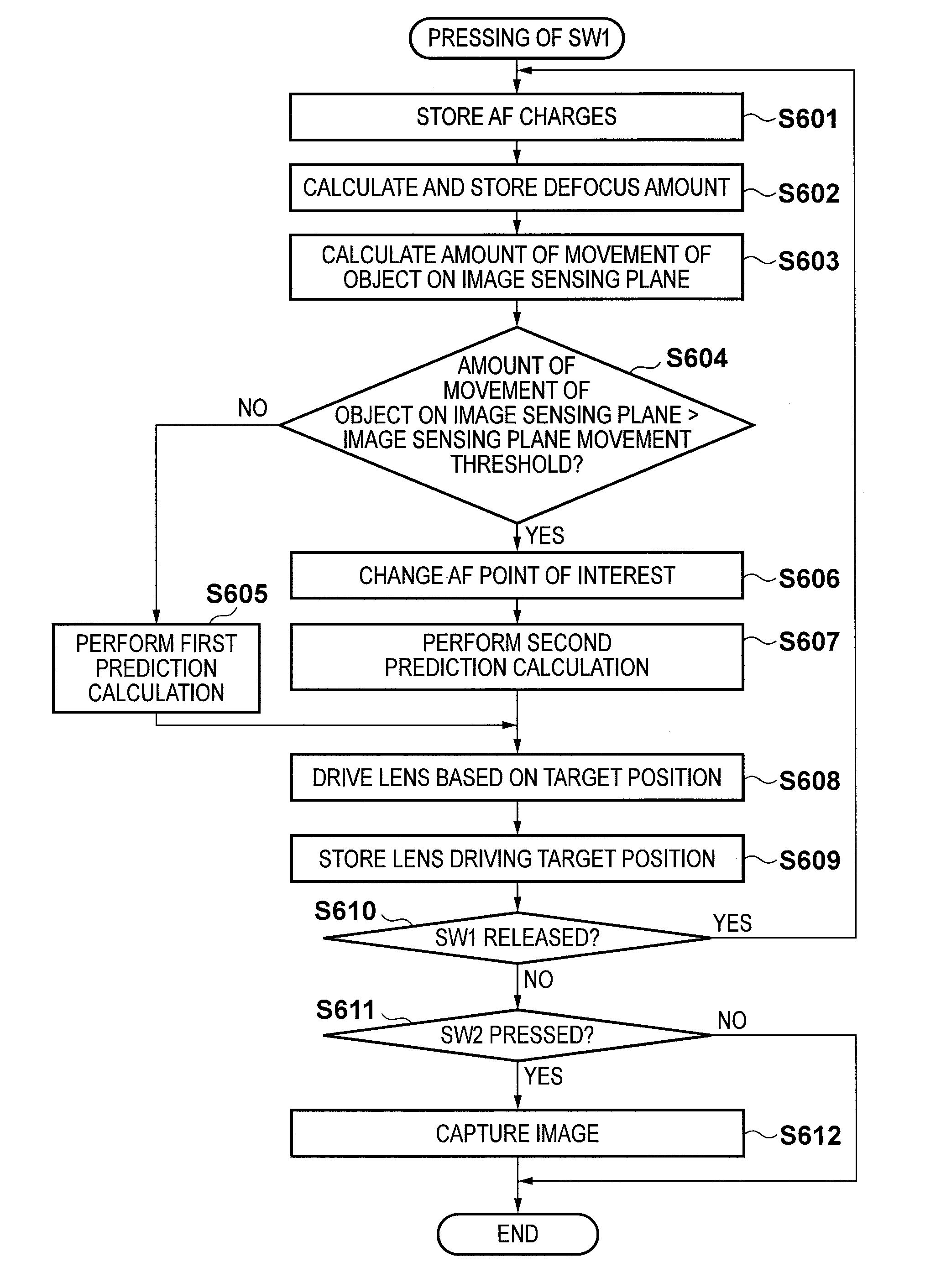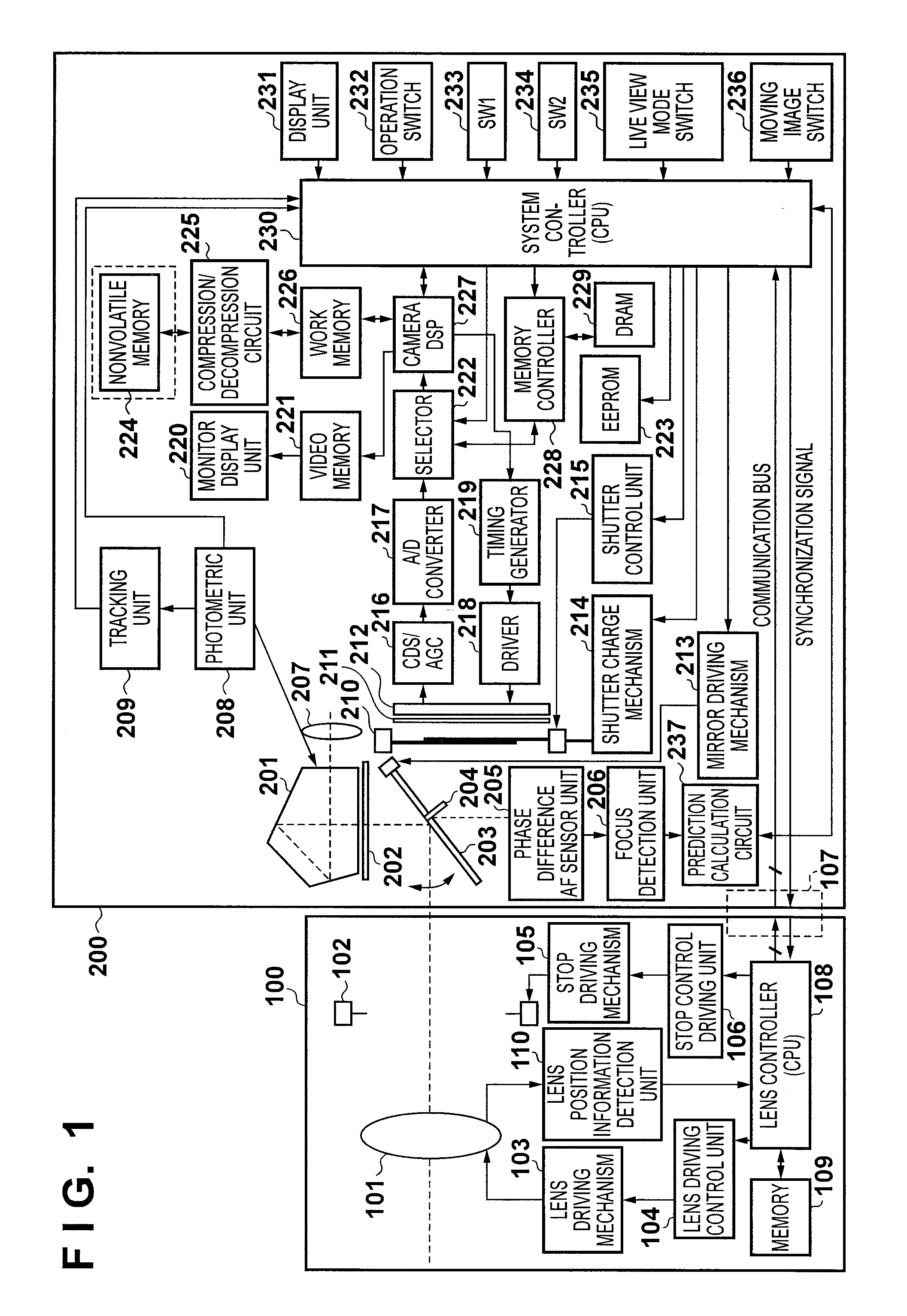Image capture apparatus
an image capture and automatic adjustment technology, applied in the direction of cameras, instruments, printers, etc., can solve the problem of difficulty in continuing to focus on skaters, and achieve the effect of appropriate focus adjustmen
- Summary
- Abstract
- Description
- Claims
- Application Information
AI Technical Summary
Benefits of technology
Problems solved by technology
Method used
Image
Examples
first embodiment
[0024]
[0025]FIG. 1 is a block diagram showing the configuration of a digital camera according to the first embodiment of an image capture apparatus of the present invention. An imaging lens 100 is detachably mounted on a digital camera 200 via a lens mounting mechanism in a mount portion (not shown), as shown in FIG. 1. The mount portion is provided with an electric contact unit 107. The electric contact unit 107 has a terminal for a communication bus line including, for example, a communication clock line, a data transfer line, a data reception line. These lines allow the digital camera 200 and the imaging lens 100 to communicate with each other. The digital camera 200 communicates with the imaging lens 100 via the electric contact unit 107 to control driving of a focus lens 101 and a stop 102 which adjusts the amount of incident light, in the imaging lens 100. Although FIG. 1 shows only the focus lens 101 as a lens in the imaging lens 100, a scaling lens and a fixed lens are also ...
modification to first embodiment
[0076]In the first embodiment, the tracking unit 209 performs correlation calculation using photometric image data obtained by the previous focus detection operation and that obtained by the first focus detection operation to the past from the previous focus detection operation to detect the direction and amount of movement of the object. However, the present invention is not limited to this, and the image magnification information (image magnification coefficient) of the imaging lens 100 may be output as needed from the lens controller 108 to the tracking unit 209 via the system controller 230, so that the tracking unit 209 performs correlation calculation after scaling the photometric image data based on the image magnification information. This operation makes it possible to improve the correlation calculation accuracy and, in turn, to improve the prediction calculation accuracy, thus more accurately controlling the focus.
[0077]Also, although the prediction calculation circuit 23...
second embodiment
[0078]In the first embodiment, the tracking unit 209 detects movement of the object on the image sensing plane using photometric image data obtained by the photometric unit 208. However, the present invention is not limited to this, and a digital camera 200 may be provided with a gyro to detect an orientation shift of the digital camera 200, thereby performing prediction calculation of the position of the object on the image plane while switching the focus detection region of interest using this orientation shift. When, for example, a professional cameraperson tracks the object, normally, the photographer is regarded as appropriately maintaining the composition, and continues to predict the position of the object on the image plane based on the detected defocus results corresponding to a predetermined number of past focus detection operations in the focus detection region of interest. On the other hand, when the object changes its position on the image sensing plane too rapidly to a...
PUM
 Login to View More
Login to View More Abstract
Description
Claims
Application Information
 Login to View More
Login to View More - R&D
- Intellectual Property
- Life Sciences
- Materials
- Tech Scout
- Unparalleled Data Quality
- Higher Quality Content
- 60% Fewer Hallucinations
Browse by: Latest US Patents, China's latest patents, Technical Efficacy Thesaurus, Application Domain, Technology Topic, Popular Technical Reports.
© 2025 PatSnap. All rights reserved.Legal|Privacy policy|Modern Slavery Act Transparency Statement|Sitemap|About US| Contact US: help@patsnap.com



